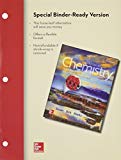
Concept explainers
(a)
Interpretation:
The molarity of the nitric acid solution.
(a)
Explanation of Solution
The number of moles is calculated from the following expression:
Here,
The conversion of volume from milliliters to liters is given as follows:
The molarity of the solution is determined by the following expression:
Here,
The molar mass of nitric acid is
Substitute
Substitute
Substitute
Therefore, the molarity of
(b)
Interpretation:
The molarity of the sulfuric acid solution.
(b)
Explanation of Solution
The molar mass of sulfuric acid is
Substitute
Substitute
Substitute
Therefore, the molarity of
(c)
Interpretation:
The molarity of potassium hydroxide solution.
(c)
Explanation of Solution
The molar mass of potassium hydroxide is
Substitute
Substitute
Substitute
Therefore, the molarity of
(d)
Interpretation:
The molarity of calcium hydroxide solution.
(d)
Explanation of Solution
The molar mass of calcium hydroxide is
Substitute
Substitute
Substitute
Therefore, the molarity of
Want to see more full solutions like this?
Chapter 4 Solutions
Combo: Loose Leaf for Introduction to Chemistry with Connect Access Card Chemistry with LearnSmart 1 Semester Access Card
- What is the molarity of a solution of strontium chloride that is prepared by dissolving 4.11 g SrCl2 in enough water to form 1.00-L solution? What is the molarity of each ion in the solution?arrow_forwardTwenty-five mL of a 0.388 M solution of Na2SO4 is mixed with 35.3 mL of 0.229 M Na2SO4. What is the molarity of the resulting solution? Assume that the volumes are additive.arrow_forwardWhen 10. L of water is added to 3.0 L of 6.0 M H2SO4, what is the molarity of the resulting solution? Assume the volumes are additive.arrow_forward
- When organic compounds containing sulfur are burned, sulfurdioxide is produced. The amount of SO2 formed can be determined by the reaction with hydrogen peroxide: H2O2(aq)+SO2(g)H2SO4(aq) The resulting sulfuric acid is then titrated with a standard NaOH solution. A 1.302-g sample of coal is burned and the SO2 is collected in a solution of hydrogen peroxide. It took 28.44 mL of a 0.1000-M NaOH solution to titrate the resulting sulfuric acid. Calculate the mass percent of sulfur in the coal sample. Sulfuric acid has two acidic hydrogens.arrow_forwardVitamin C, ascorbic acid (C6HgO6)(molar mass 176.1 g/mol), is a reducing agent. One way to determine the ascorbic acid content of a sample is to mix the acid with an excess of iodine, C6HgO6(aq) + I2(aq) + H2O(l) C6HgO6(aq) + 2 H3O+(aq) + 2 I(aq) and then titrate the iodine that did not react with the ascorbic acid with sodium thiosulfate. The balanced, net ionic equation for the reaction occurring in this titration is I2(aq) + 2 S2O32(aq)2 I(aq) + S4O62(aq) Suppose 50.00 mL of 0.0520 M I2 was added to the sample containing ascorbic acid. After the ascorbic acid/I2, reaction was complete, the I2 not used in this reaction required 20.30 mL of 0.196 M Na2S2O3 for titration to the equivalence point. Calculate the mass of ascorbic acid in the unknown sample.arrow_forwardThe thallium (present as Tl2SO4) in a 9.486-g pesticide sample was precipitated as thallium(I) iodide. Calculate the mass percent of Tl2SO4 in the sample if 0.1824 g ofTlI was recovered.arrow_forward
- Iron forms a sulfide with the approximate formula Fe7S8. Assume that the oxidation state of sulfur is 2 and that iron atoms exist in both +2 and +3 oxidation states. What is the ratio of Fe(II) atoms to Fe(III) atoms in this compound?arrow_forwardA certain grade of steel is made by dissolving 5.0 g of carbon and 1.5 g of nickel per 100. g of molten iron. What is the mass percent of each component in the finished steel?arrow_forwardVitamin C is ascorbic acid, HC6H7O6, which can be titrated with a strong base. HC6H7O6(aq) + NaOH(aq) NaC6H7O6(aq) + H2O() A student dissolved a 500.0-mg vitamin C tablet in 200.0 mL water and then titrated it with 0.1250-M NaOH. It required 21.30 mL of the base to reach the equivalence point. Calculate the mass percentage of the tablet that is impurity.arrow_forward
 Chemistry: Principles and PracticeChemistryISBN:9780534420123Author:Daniel L. Reger, Scott R. Goode, David W. Ball, Edward MercerPublisher:Cengage Learning
Chemistry: Principles and PracticeChemistryISBN:9780534420123Author:Daniel L. Reger, Scott R. Goode, David W. Ball, Edward MercerPublisher:Cengage Learning Chemistry: Principles and ReactionsChemistryISBN:9781305079373Author:William L. Masterton, Cecile N. HurleyPublisher:Cengage Learning
Chemistry: Principles and ReactionsChemistryISBN:9781305079373Author:William L. Masterton, Cecile N. HurleyPublisher:Cengage Learning Introductory Chemistry: A FoundationChemistryISBN:9781337399425Author:Steven S. Zumdahl, Donald J. DeCostePublisher:Cengage Learning
Introductory Chemistry: A FoundationChemistryISBN:9781337399425Author:Steven S. Zumdahl, Donald J. DeCostePublisher:Cengage Learning Chemistry: The Molecular ScienceChemistryISBN:9781285199047Author:John W. Moore, Conrad L. StanitskiPublisher:Cengage Learning
Chemistry: The Molecular ScienceChemistryISBN:9781285199047Author:John W. Moore, Conrad L. StanitskiPublisher:Cengage Learning Chemistry for Engineering StudentsChemistryISBN:9781337398909Author:Lawrence S. Brown, Tom HolmePublisher:Cengage Learning
Chemistry for Engineering StudentsChemistryISBN:9781337398909Author:Lawrence S. Brown, Tom HolmePublisher:Cengage Learning ChemistryChemistryISBN:9781305957404Author:Steven S. Zumdahl, Susan A. Zumdahl, Donald J. DeCostePublisher:Cengage Learning
ChemistryChemistryISBN:9781305957404Author:Steven S. Zumdahl, Susan A. Zumdahl, Donald J. DeCostePublisher:Cengage Learning





